Is Substack a Censored Platform?
Here’s some evidence that suggests it is.
I remember back in 2022, when I first learned about Substack, and then later when I started publishing on it, that – in addition to my excitement and gratitude for a platform that did not seem to be censoring disfavored narratives – I also had a nagging apprehension: It looked like all the dissident and contrarian writers were being herded into this little orange corner of the Internet, where it would be very easy to then make us disappear.
Now that apprehension is getting much stronger.
In this article, I will present evidence suggesting that Substack is not just noticeably censored from the outside, but also possibly engaging in censorship on the inside.
I will use data from prominent counter-mainstream-narrative authors who are heavily censored on other platforms and who are experiencing concerning signs of censorship on Substack.
Note on what I mean by “dissident and contrarian writers” and “counter-mainstream-narrative authors”: These are writers who are exposing and opposing the corruption of the powerful, regardless of political party or affiliation. These are not writers who are censored for their “liberal” or “conservative” views. They are censored regardless of the parties or candidates who happen to be in power, because they threaten the supra-political power structures that control the narrative (more in this article: https://debbielerman.substack.com/p/how-awesome-is-the-deep-state-really).
Outside Censorship of Substack
At this point it seems indisputable that Substack — or at least a notable subset of Substack writers — is heavily blocked and censored on major platforms from X to Google.
Famously, as summarized by one Twitter/X user in 2023:
“Substack writers cannot embed tweets in their posts. Twitter users cannot retweet or like tweets with Substack links.”
In a September 2024 conversation about this blockage, Substack founders Hamish McKenzie and Chris Best noted that the most extreme measures taken against Substack by X in 2023 have been lifted, and that blocking or impeding links to other sites is a natural business choice for any platform that needs eyeballs and attention glued to itself.
Nevertheless, the linking barriers between X and Substack severely curtail the ability of Substack authors to access X’s massive user base.
As for Google and other platforms, as John Leake, an author at the Substack “Focal Points” (formerly Courageous Discourse) wrote on August 11, 2025:
I noticed that none of my most popular Substack posts and video interviews were being shared in Google search results for “Author John Leake.” Posts and videos that received over 100,000 views on Substack were nowhere to be found in Google search results.
Moreover, Facebook, Twitter, and YouTube were also (apparently) blocking or shadow-banning links to our Substack posts and videos.
In light of this, we perceived Substack to be something akin to the old Jewish ghettos of Europe. While ghettos in cities such as Venice, Rome, Vienna, and Krakow were large and flourishing neighborhoods, they were still more or less walled off from the rest of the city. Such ghettos were also vulnerable to occasional pogroms.
With so many “dissident” writers moving to the Substack platform, I grew concerned that the entire free speech movement could be imperiled if Substack came under attack or was taken over by pro-censorship interests.
I do not know if this Substack “ghettoing” experience is shared mostly by controversial or dissident Substackers, or if it affects anyone who wants to see their Substack content served in the top tier of search results.
It may be due to Google’s non-organic ranking algorithms, described on Google Search Central:
Multiple systems work in various ways to show the most reliable information possible, such as to help surface more authoritative pages and demote low-quality content and to elevate quality journalism.”
If Substack is not considered by Google’s “multiple systems” to be a source of “reliable information” or an “authoritative” resource with “quality journalism” then Substack articles will not rank high in search results.
Again, this may apply to specific disfavored Substack writers, or it may apply to Substack as a whole.
Note to readers: Please share your experiences – whether they confirm or contradict these assertions – in the comments section below.
Internal Censorship of Dissident Writers on Substack
Writers who are censored on other platforms
In order to figure out whether censorship algorithms might be operating inside Substack, I contacted several prominent dissident writers, with large numbers of Substack subscribers (between approx. 10K and 60K) who have been censored elsewhere. Here is the list of writers and their testimonials as to their censorship on other platforms (unless otherwise specified, all testimonials were sent to me by email in September 2025). Note that the censorship is ongoing, regardless of changes in ruling political party or President:
Bill Rice (billricejr.substack.com)
Regarding Facebook, my account was suspended three or four times between 2020-2022 for “violating company posting standards” (all true or accurate posts about Covid topics).
I’m now out of Facebook timeout and use the speech platform to promote stories for my local Substack, The Troy Citizen. If I post something innocuous, I seem to get a good number of likes, shares and comments from my 1,600 followers. However, whenever I post something from my national Substack or that’s Covid related, I usually get no likes and no comments, making me think I’m still being shadow-banned. I’ve given up posting anything controversial on Facebook. I know Facebook says they no longer censor objectionable content, but I don’t believe that for a second.
Meryl Nass (merylnass.substack.com)
I have been thrown off twitter twice and my main twitter channel remains frozen since Dec 18, 2024. My google blog (anthraxvaccine.blogspot.com) which I have had since 2007 has taken down posts (sometimes alerting me sometimes not) and threatened if I have more posts they don’t like they will take down the blog.
Sasha Latypova (sashalatypova.substack.com)
I was kicked off Twitter in 2021, but it wasn’t a large account. At the same time, I was banned on Paypal for a couple of years. They unbanned it now, although I had to open another account. I have had a LinkedIn profile since 1998. I have thousands of professional connections. They banned me about a year ago. They locked me out of my account and then removed my profile photo. The account is still there, but has no photo now.
For a long time even putting a clip with me in an interview would get a channel strike on YouTube. It’s less overtly censored now, and any video I put up on Substack is supposed to auto-upload to YouTube, but it’s hard to find my videos or interviews with me there.
CJ Hopkins (cjhopkins.substack.com)
(from a 9/13/23 interview on Substack):
My latest book of essays, The Rise of the New Normal Reich: Consent Factory Essays, Vol. III (2020-2021), is banned by Amazon in Germany, Austria, and The Netherlands, and more or less impossible to order in German bookstores, and I’m under criminal investigation here in Germany for tweeting the cover art. Most of my social media output is censored and/or visibility-filtered by Twitter/X and Facebook. My interviews have been censored by YouTube. Google visibility-filters my search engine results.
Margaret Anna Alice (margaretannaalice.substack.com)
Most recently, Google slapped a scary warning on my Billionairian Blueprint newsletter for all Gmail users (approximately 19k of my mailing list, so it had a huge impact)
Comprehensive AI erasure of ALL my Substack articles across ALL search results for nearly every search engine, from Google to Brave to DuckDuckGo: In August 2024, I discovered Google had AI-erased every single one of my Substack articles from all search results.
YouTube throttling view counts: I first noticed Duck Duck Go’s censorship a few days after I published Cody Hudson’s reading (February 13) of Lament of the Vaxx-Injured. I caught YouTube in the act of throttling view counts for that video and documented it in these tweets (here and then one hour later here; screenshots showing the count going from 762 to 685 within that hour; I’d noticed the video had 1.3k views shortly after I published it that morning; nearly seven months later, it shows as 1.2k views, so they haven’t even let the views get back to where it was when I first published it).
My very first YouTube video—before I even had any followers—shows 6.3k views. Tess’s reading of Mistakes Were NOT Made shows 109k views. My last published video, It’s a Big Beautiful Club, only has 250 views. I find it highly suspicious that my view counts have gone from thousands (even 100k+) to almost zero as my YouTube channel and audience have grown over the years.
Big Tech email providers disabling notifications: Readers repeatedly alert me that their email notifications have been disabled without their knowledge as I reported in this PSA.
Facebook account suspended: My Facebook account has been disabled twice, I believe. I documented one such instance here, which occurred following an exchange I documented in this and this post.
What is happening to these writers on Substack?
It’s important to note that, despite their ongoing censorship on other platforms, these writers do not necessarily believe that Substack is censoring them. Nevertheless, they are experiencing remarkably similar trends that I would argue point to something more than can be explained by their individual experiences.
These trends include:
Precipitous decline in paid subscribers
Total subscribers hovering around a set point
Dramatic declines in page views, impressions, conversions to subscribes
Demotion of sensitive content
Precipitous decline in paid subscribers 2024/2025
I was first alerted to this trend by Sasha Latypova, with whom I co-published the Covid Dossier – a heavily censored report on the global military/intelligence coordination of the Covid operation. (Try typing Covid Dossier or The Covid Dossier into Google, with or without quotes. In every case, you will not get a link to the Dossier itself, which has thousands of likes and tens of thousands of views on Substack, let alone our most popular interviews, some with over 100K viewers on YouTube).
Sasha noticed the following about her subscriptions: The number of paid subscribers peaked on the date of the release of the Dossier and has been declining precipitously ever since. This is not likely to be due to lack of interest in Sasha’s Substack material, as the overall number of subscribers has been increasing steadily:
While Sasha can point to a specific publication as the potential trigger for her massive decline in paid subscribers, others – including Meryl Nass, Margaret Anna Alice, CJ Hopkins and Bill Rice have all experienced eerily identical precipitous declines in paid subscribers, while their overall subscribers and “followers” (a new Substack category that seems to be counter-productively veering readers away from actually subscribing to newsletters) are rising steadily.
These are their August/Sept 2024-August/Sept 2025 Paid Subscriber curves. I have deleted the names and numbers of subscribers to maintain their privacy:
Other authors on Substack have noted the same pattern, but I was not able to obtain the detailed graphs:
John Leake, an author at the Substack “Focal Points (formerly Courageous Discourse)” noted on August 11, 2025:
In a gambit to try to expand beyond the digital walls that had apparently been erected around Substack, we changed the title of our newsletter to “The Focal Points” and adopted the domain thefocalpoints.com.
We made this change on February 14, 2025. Though it may just be a coincidence or a result of shifting trends and interests, the total number of our paid subscribers peaked on February 14 and has been precipitously declining ever since.
[BOLDFACE ADDED]
POSSIBLE EXPLANATIONS
Individual author issues
Several of the Substack authors mentioned above have an explanation for why their particular publication is losing paid subscribers, while maintaining a steady growth in overall interest. As mentioned above, John Leake thinks it may be due to “shifting trends and interests.”
Margaret Anna Alice wrote in a recent email: “ I have lost 231 paid subscribers since January 1, 2024. That’s when I started noticing my paid subscriptions starting to plummet. I attributed it to the tanking economy and still think that is the primary cause based on the few people who take the time to provide feedback when they unsubscribe.”
Meryl Nass wrote: “There may be many troll subscribers that come and go in droves. I think the loss of paid subscribers is about me telling them to donate at DTF instead of paid subscribing, plus the rapidly growing number of choices they have on substack.”
CJ Hopkins wrote: “I think the steady decline is the result of my failure to get on the MAGA/Musk train, rather than any shenanigans.”
For each of the authors separately, these explanations may apply to some extent. But why would they start losing subscribers at almost exactly the same time, and then lose them at an almost identical rate, over the same period of time? And why would this decline in paid subscribers go in the opposite direction of their overall subscriptions and followers, which continue to increase? The uniformity of their curves and of the timing of the declines suggests that there is a larger trend that does not have to do with dissatisfaction or disinterest of their particular audiences, or with the publication or lack of publication of particular articles or viewpoints.
Stripe/external payment processing issues
Escapekey (escapekey.substack.com), another contrarian Substacker, found a possible explanation: He noted that Stripe – the company that processes payments for Substack – recently started rejecting paid subscriptions to his Substack.
Here’s how he described this is a Substack Note on September 1, 2025:
What I have spotted over the past couple of weeks is an astronomical quantity of payment card rejections in my Stripe log.
Especially those who paid in full have had to repeatedly try, again and again and again it appears, more than 50% of recent attempts to pay for a full year were rejected.
Going back in history, no such pattern took place earlier.
When he tried to figure out whether this could be due to chance, here’s what he came up with, as explained in another Note from September 3, 2025:
Overnight, yet another pay-in-full transaction was rejected. That makes recent stats 4 of 7 failing to complete, with 16 prior all succeeding. Statistically, ‘Probability if nothing changed: ~0.08% (less than 1 in 1,000)‘ which sounds about right.
Maybe this is an external censorship issue
When looking at the eerily similar decline curves for paid subscriptions for the writers pictured above, the question arises: how would Substack accomplish this internally? As Margaret Anna Alice noted in an email:
I do still wonder how Substack could be causing paid subscriptions to get canceled as it seems like it would require action on the part of the user.
I do know free subscriptions are getting canceled without some users’ awareness, although my understanding is that is due to Big Tech email providers marking my newsletters as spam and notifications getting automatically disabled as a result.
I suppose Substack could be canceling random paid subscriptions and then some users just let it go and don’t follow up to resubscribe?
Perhaps, as Margaret Anna suggests, external censorship through payments and also through disabled notifications might explain some decrease in paid subscribers. Substack could also be canceling paid subscriptions without notifying the subscribers.
Whatever the answer, I believe the trend is too glaring to be due just to individual Substackers’ audience preferences.
Total subscribers hovering around set point
Whereas the declining paid subscriber trend described above may be another external censorship phenomenon, this one seems internal to Substack:
Several of the authors mentioned above have experienced a strange stagnation in their overall subscription numbers, not coinciding with the decline in paid subscriptions, nor with a steady increase in followers.
This phenomenon manifests in regular losses of a bunch of subscribers, whenever the “Overall Subscriber” number climbs to a certain point, and then a re-upping of about the same number. So the subscriptions just keep going up and down around the set point, and there is no steady increase. For several of the authors, this phenomenon seems to have started in the spring of 2025.
Here’s how the authors describe this (in emails in September 2025):
Bill Rice
This rings true to me as I never could get past 8,000 total subscribers. I have recently (thanks to one Steve Kirsch cross-post), but barely and I now get 20 to 50 unsubscribe notices with about every story I publish. So 8,000 might be my ceiling?
I add 20 new subscribers and then lose 21. I lose many of these former subscribers just after I post an article I thought was pretty good. A few people in the reader comments tell me that article was “brilliant” or “great” or “the best thing you’ve written yet.”
Margaret Anna Alice
The sawtooth effect in all subs shows how each time I send out a newsletter, I receive a bunch of email disabled notifications. Overall, my mailing list is growing, but it’s like two steps forward one step back. I reached 45k in March but dropped back down to 44k in June due to the waves of unsubs, and I haven’t gotten back to 45k yet.
EscapeKey (in a September 7, 2025 private chat with me on Substack):
probably around a year back i was growing exponentially (as growth usually is), and then suddenly out of nowhere, all growth went very oddly linear which isn’t natural at all. this was intermittently interrupted by just as odd period of times where growth would be super-slow followed by a few days of explosive growth - as though i was artificially range bound
Sasha Latypova and Meryl Nass shared All Subscriber graphs showing this phenomenon, beginning around June-July 2025:
Meryl Nass followed up in an email on October 2, 2025:
These really don’t make sense. Supposedly I get about 30 subscribers daily and about 85 total followers daily, but I have been stuck for over a month on subscribers.
In the case of free/overall subscriptions, it seems that there is mostly an internal mechanism – whether intentional or not – leading to lots of unsubscribes, followed by approximately the same numbers of subscribes, and then more unsubscribes, etc.
Dramatic declines in page views, impressions, conversions to subscribes
This trend has been noted extensively by Bill Rice and EscapeKey.
As Bill noted in a July 23, 2025 email:
I thought my last article was pretty good and original, but it only generated 3,800 “page views,” which is what I was getting when I had 3,000 subscribers two years ago. And I got one new free subscriber.
In another email Bill wrote:
I also have gotten a good number of emails or reader comments from subscribers telling me they don’t get my dispatches or when someone makes a comment to one of their Reader Comment posts, they don’t get a notification of this. One reader just notified me that he thinks someone is unsubscribing him without his knowledge - when he didn’t unsubscribe or cancel a subscription.
EscapeKey wrote in a September 16, 2025 Substack Note:
I find it quite amusing how every time I post a new essay, within 10 minutes, I lose 3-10 followers, just like that, regardless of topic. I just don’t see that statistically being even remotely likely, but hey.
There are just so many statistical oddities… nah, impossibilities on this platform… it’s becoming increasingly hard to tell the difference between the outright manipulation taking place on this platform and that taking place on twitter.
And in a private Substack chat with me:
wrt sudden unsubscriptions, pretty much every time i post an essay i lose between 3-10 within 30 minutes. it’s very rare that it doesn’t drop, which doesnt appear real to me. i also see regular drops of singular subscribers at almost timed intervals.
oh yeah, and lots of reports from people about not being able to like or comment on posts - and others complaining about likes that has gone missing.
oh yeah, not forgetting the very strange patterns i often get in the middle of the night while asleep where i get like 5-10 new followers out of nowhere, and then absolutely nothing again - as though there’s some quota after which my notes are not displayed organically.
Again, these strange trends might be coincidental, or due to individual authors’ articles or audiences. Or they may be intentional. Please comment, if you have any insights into these trends.
Demotion of sensitive content
I initially began researching this article due to a random observation I made while perusing Sasha Latypova’s Substack.
I was looking for the Covid Dossier (which we published together) and another one of her articles that contained a leaked audio recording revealing the national security nature of the Covid response. These articles received 675 and 735 likes on her Substack, respectively.
When I clicked on the “TOP” filter on Sasha’s site, I expected to see them at the top. But they were not. So I started going down the list, which I understand is supposed to be ordered according to the number of likes (and possibly factoring in the number of comments and shares). To my surprise, I found articles with even more likes – over 1,000 in several cases – buried way down among the 200-300s.
Here are a few examples of this phenomenon:
Sasha’s most popular article, as far as I can tell from endless scrolling through her “TOP” list – which does not list the most popular at the top – is this one: Dear Dr. Malone… (1,227 likes, 737 comments, 147 reposts). Based on its popularity, I presume it should appear as the first article in the “TOP” section. (If that presumption is wrong, please let me know in the comments.)
Instead, I found it after a lot of scrolling, below Putin endorses New World Order by Pretend-hating on Klaus Schwab (355 likes, 376 comments, 38 reposts).
Sasha’s next most popular article (I think) is this one, which she has pinned at the top of her site: Summary of Everything and Quick Links, Updated - April 2025 (1,103 likes).
Presumably, it should appear second, or close to that, under “TOP,” but instead it appears many dozens of articles down, under Looking at a Drop of Dental Anesthetic Drying Under a Microscope (397 likes).
There are many more examples of articles with likes in the 600s and 700s buried among the 200-300s.
This demotion of Sasha’s most popular – and most dangerous to those protecting the establishment Covid narrative – content corresponds to the censorship tactics used on other platforms, where the algorithm serves as top search results the items with low or middling popularity and engagement, while burying or completely ignoring the most popular items. (A good example of this is the Google search results for “The Covid Dossier,” as discussed above.)
WHAT DOES SUBSTACK SAY ABOUT CENSORSHIP?
In an April 25, 2025 message to Margaret Anna Alice, Mills Baker, the Head of Design at Substack said:
I can say with confidence that we are still not suppressing anyone, shadow banning anyone, being pressured by 3rd parties to control discourse, etc. no one tells us what to do (or even tries, so far; I guess we’re not big enough?), and we don’t try to influence any of this stuff and would resist any attempts to force us to.
it’s like a whole reason the platform exists and is very important to the founders, Chris [Best - Substack Co-founder] in particular…
Hamish McKenzie, the other Substack Co-founder, wrote in July 2025:
Unlike social media, the Substack model isn’t about top-down order or submission to a ruler’s whims. You get to set the terms of the culture you want to live in.
We are building a system that allows order to emerge through facilitating the free flow of information and thought, where people help one another understand the world and feel part of something larger than themselves.
If the founders are to be believed, Substack does not engage in internal censorship at all.
How can we reconcile such statements with the experiences of the writers presented in this article? One way might be to follow the money.
Who Owns/Controls Substack?
Perhaps, despite their best intentions, the founders of Substack, like the founders of every social media and search platform, are ultimately beholden to the needs and decisions of their funders who are the same overlapping group of companies and tech billionaires.
Just one example of a prominent investor in both X and Substack is Marc Andreessen, whose company Andreessen Horowitz invested $400 million in X [ref] and was a lead investor in the July 2025 $100 million funding round in Substack, as well as earlier rounds [ref].
Andreessen’s analysis of the Covid response, in a widely cited article entitled “It’s Time to Build,” included lamenting that “Every Western institution was unprepared for the coronavirus pandemic, despite many prior warnings” and
Our scientists will hopefully invent therapies and a vaccine, but then we may not have the manufacturing factories required to scale their production. And even then, we’ll see if we can deploy therapies or a vaccine fast enough to matter—it took scientists 5 years to get regulatory testing approval for the new Ebola vaccine after that scourge’s 2014 outbreak, at the cost of many lives.
Notably, in April 2020, Andreessen was not questioning the pandemic narrative and was laser focused on the biodefense lockdown-until-vaccine solution – using the declared emergency to argue that the regulatory barriers to vaccines in the past needed to be discarded for Covid, as indeed they were – with disastrous results.
This is just one small example of how the investors in tech platforms might have an interest in the type of censorship experienced by those who question those investors’ assumptions about what we need to do to prepare for pandemics, develop vaccines, etc.
For my readers’ reference, here’s a list of some stakeholders in Substack, as reported by Tech Crunch on July 17, 2025 (it’s interesting to note that July 2025 is around when some of the writers mentioned in this article started to experience the strange stagnation in their subscription numbers):
Substack announced on Thursday that it has raised $100 million in Series C funding led by investors at BOND and The Chernin Group (TCG). The round included participation from Andreessen Horowitz; Rich Paul, CEO and founder of Klutch Sports Group; and Jens Grede, CEO and co-founder of Skims.
And, just for interest’s sake, or in case you encounter someone who says “Elon Musk made X a free speech platform,” here are some of the stakeholders in X (from Tech Crunch):
Andreessen Horowitz
Pershing Square Foundation, linked to Pershing Square Holdings, founded by billionaire investor Bill Ackman 20 years ago
Oracle founder Larry Ellison
Sean Combs Capital, a business linked to the American rapper Diddy—previously known as Puff Daddy
Saudi Prince HRH Prince Alwaleed Bin Talal Bin Abdulaziz Alsaud
Twitter founder Jack Dorsey
CONCLUSION
I cannot say for certain that Substack is censoring authors who challenge/question/ oppose/expose the global criminal cabal, more benignly known as the biodefense public-private partnership, that ran Covid, or other dissident writers.
This article presents evidence that external censorship of contrarian authors is very likely happening. Internal censorship seems like it’s happening, but we do not have definitive proof.
Please add comments, if you have any experience or information to share about these topics.
And if anyone can get Substack leadership to address these issues, that would be amazing!



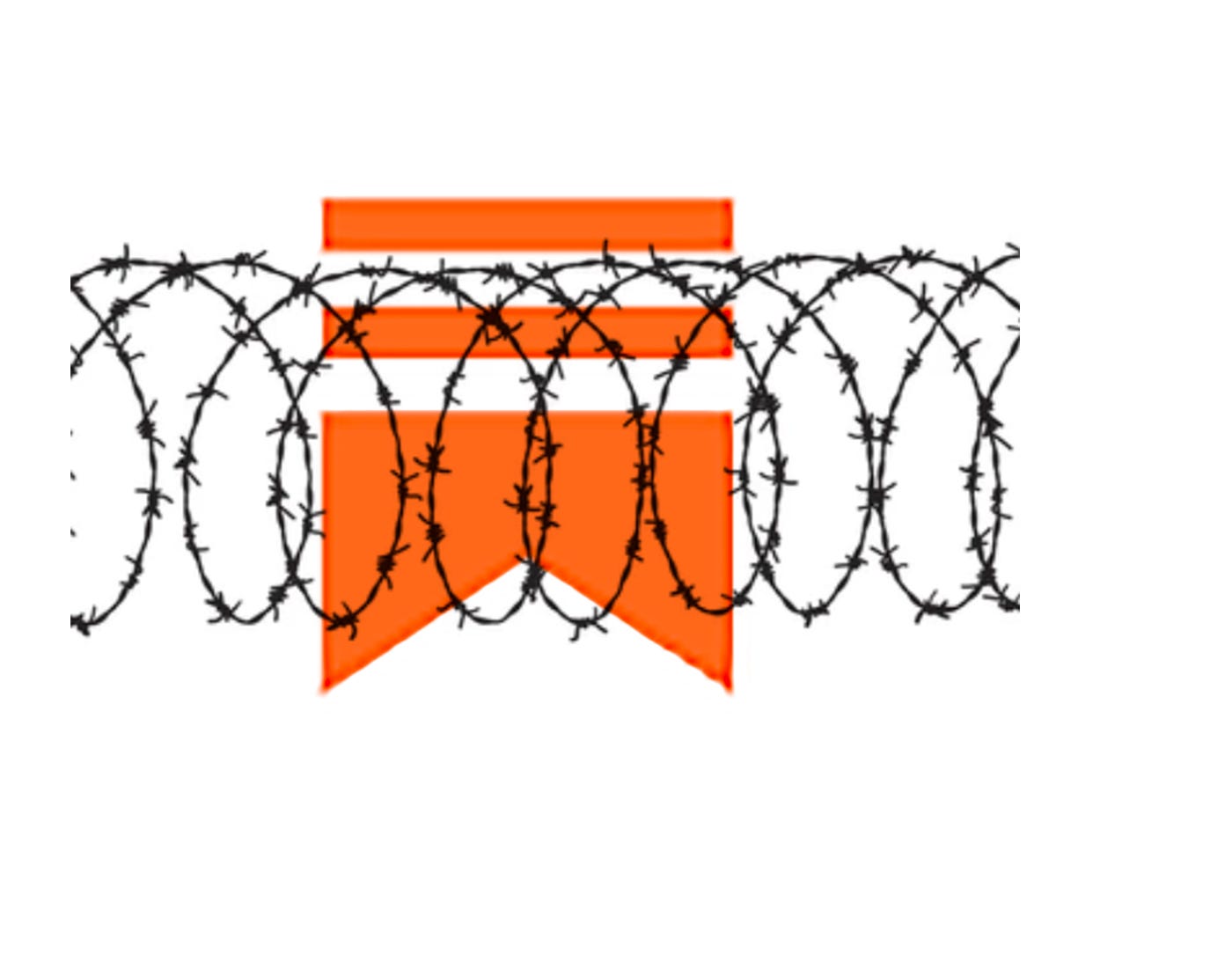
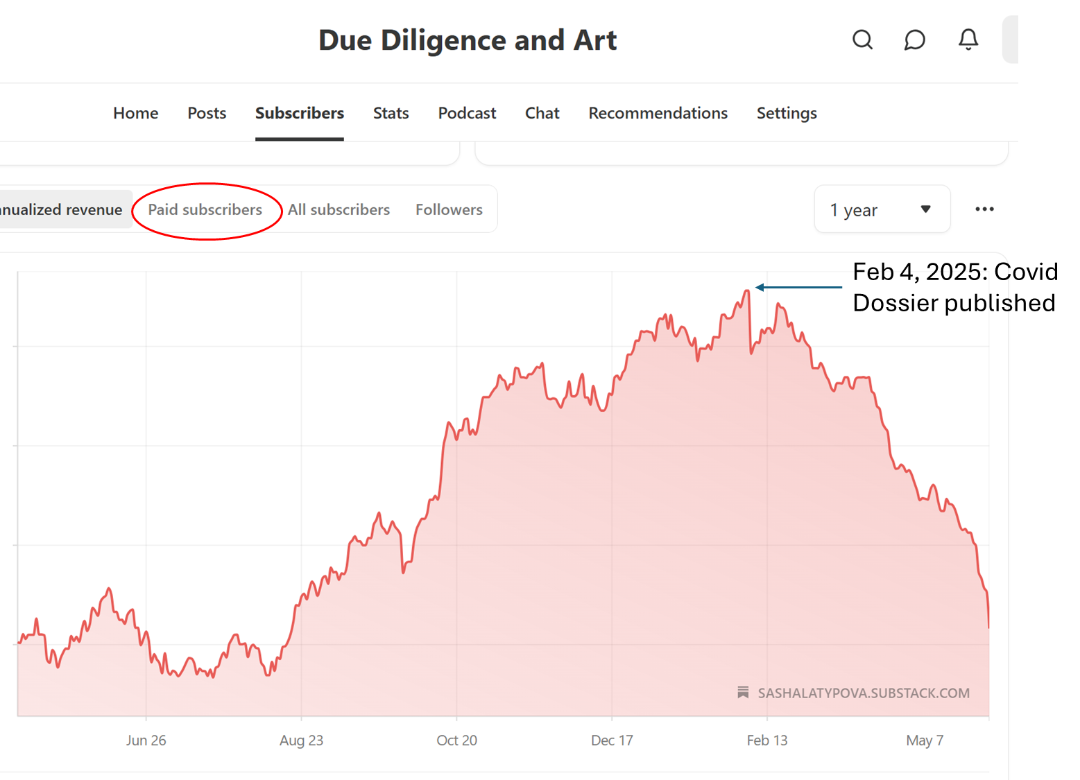
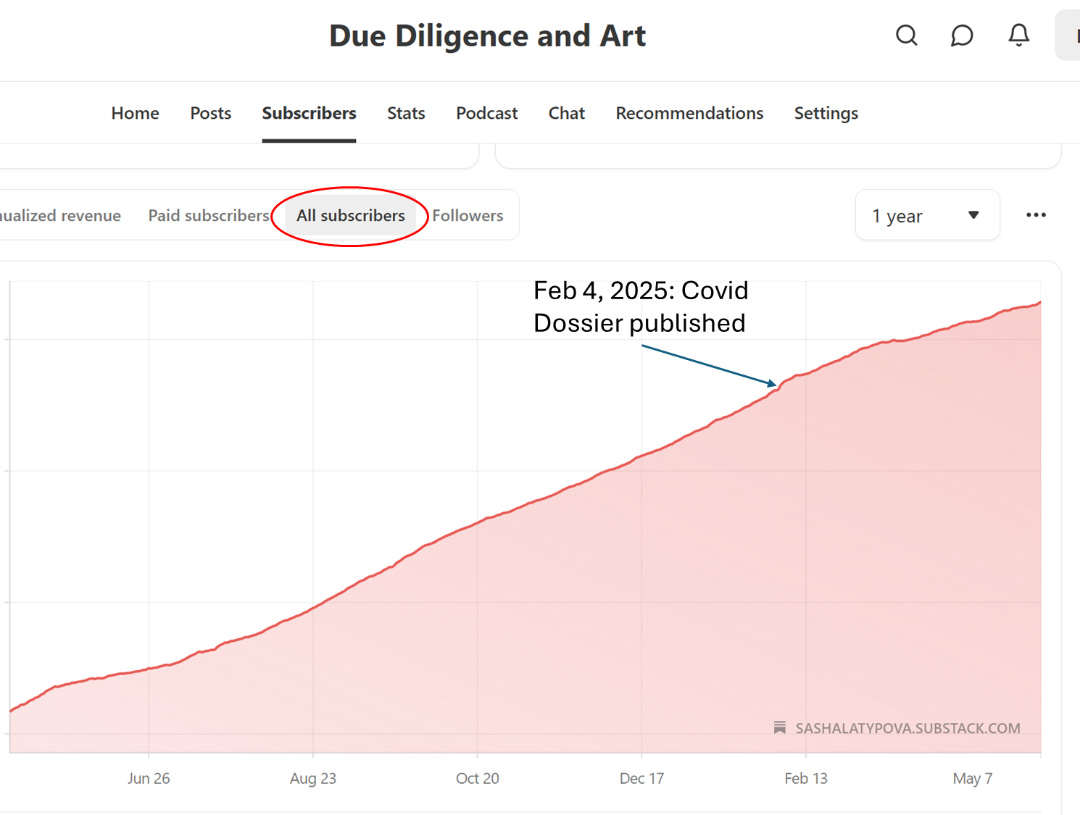
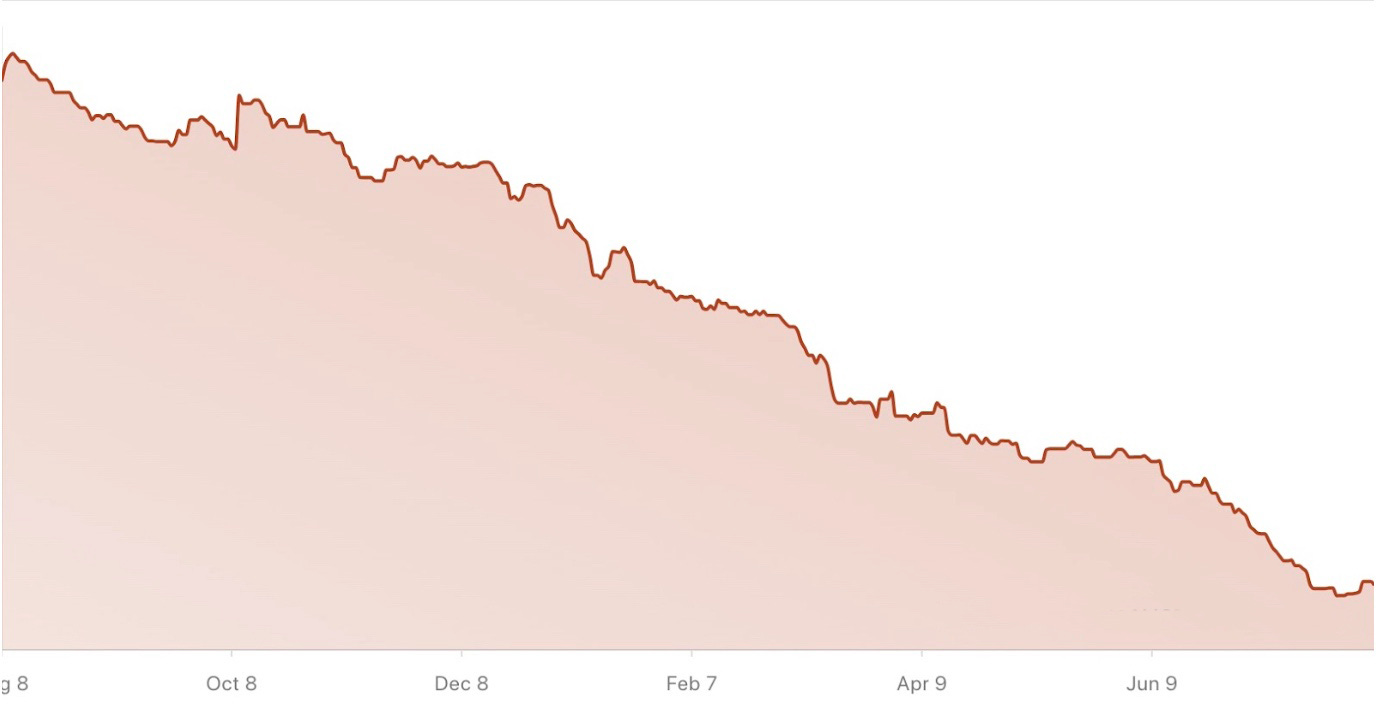


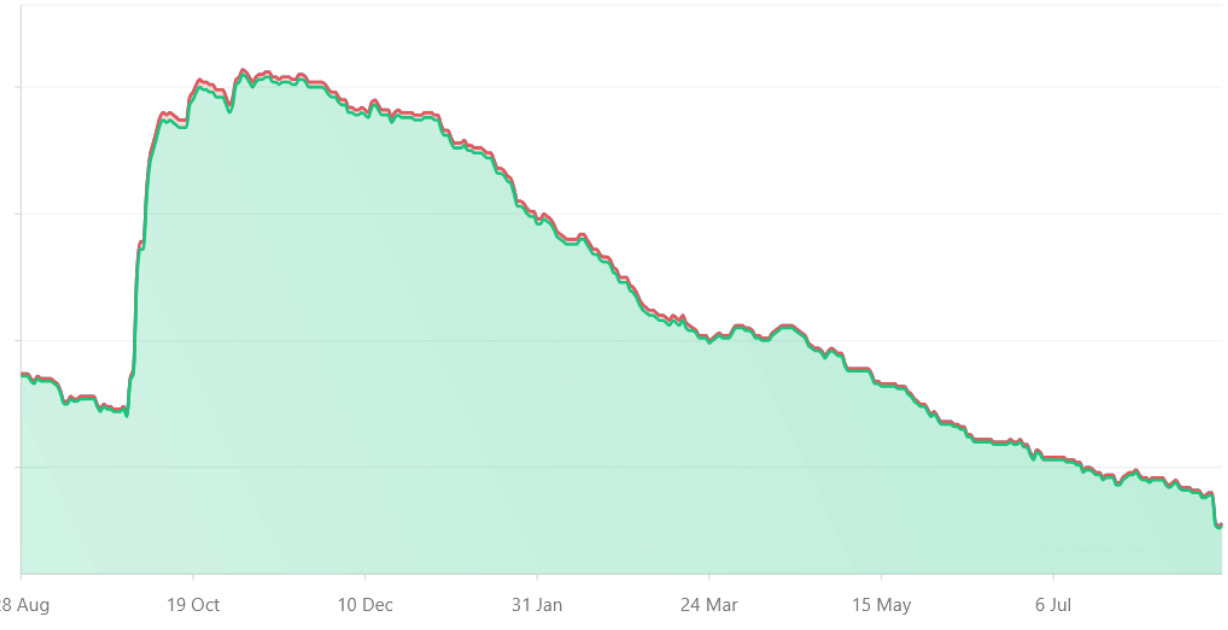


I would love to know who is censoring any further discussion on the embalmer clots ?
Great post!
Unlike others, I have never been on Facebook.
But I've been reading Substack authors for many years.
I am eternally surprised that left-leaning ex-"journalists", instantly acquire 100,000 subscribers.
Seriously?